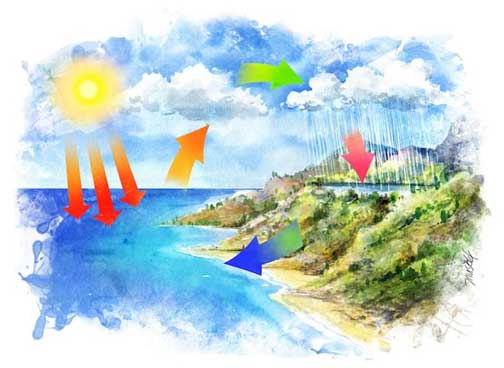Getting high-quality drinking water from your well can sometimes be challenging. When you don’t have access to a community water system, you are likely dependent on well water for your household and other needs. Due to a number of known and unknown contaminants, most well owners will benefit from purifying well water before consuming it.
Why Purify Well Water
Well-water can contain a variety of harmful pollutants and pathogens. When there is flooding, the situation can worsen significantly as agricultural chemicals and other contaminants enter well water. These can harm the health of you and your family.
Remove Nitrates from Well Water
Private wells can be contaminated from naturally occurring sources and by human activities. For example, fertilizers contain nitrates, and while these may be beneficial for crops, they can find their way into your well through seepage and groundwater run-off. Once taken into the body, they are converted to nitrites. Ingestion of these is hazardous for infants and young children, and in some cases, causes “blue baby syndrome” as they reduce the blood’s ability to carry oxygen. Nitrates and nitrites can create serious health issues for infants.
Chemicals and Septic Tanks
Other potential contaminants in well water can include run-off from septic tanks and industrial pollutants that migrate for significant distances and contaminate well-water. Even household chemicals can find their way into wells. Leaching of household plumbing can contribute to contamination of wells and heavy metal contamination, which can occur through groundwater movement. These can result in liver and kidney damage and cancer at high levels. Additionally, well-water contaminants can include bacteria, viruses, and parasites found all over the planet. These can cause gastrointestinal illnesses and infections. Even run-off from rainwater and snowmelt can impact well-water.
The Hydrologic Cycle in Action
I was in Guam, a small island in the Western Pacific, many years ago, completing a training program. The weather deteriorated quickly; we were in a deluge of rain. We placed a glass on the balcony and collected rainwater with the class participating. I then took a meter that measures the purity of the water in parts per million (ppm). It measured 0 ppm. The ocean surrounds Guam, so I asked the group about the origin of the rain.
The rain came from the clouds that got their moisture from the sun beating on the Pacific Ocean, causing evaporation. The evaporation formed clouds, and when the conditions were right, it rained. But wait, ocean water is about 35,000 ppm and is not drinkable. So why is rain 0 ppm? That is Nature’s process for water purification, known as the hydrologic cycle. When evaporation and water turn to vapor, the contaminants in the seawater stay in the seawater and do not evaporate. That is why rainwater is pure (except for air pollution). We all benefit from this natural process; it is why we have fresh water on Earth.
How to Purify Well Water
There is a solution that many well owners use to provide high purity water for drinking, ice-cubes, and pets. That solution is vapor distillation, a natural purification process that has been around us for time immemorial. A Pure Water distiller uses this same process to purify your well-water as the hydrologic cycle. Water Distillers are designed to take in well-water and convert it into safe, drinkable water. First, it is brought to a gentle boil, then the steam (vapor) rises from the heated water and is separated and cooled in the distiller. When cooled, it converts from steam to distilled water and is stored in a separate tank. At this point, you can transport this freshly distilled water to your refrigerator, kitchen spigot, or icemaker.





Leave a Reply